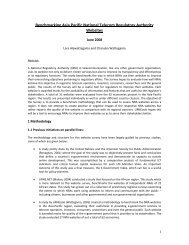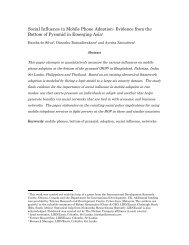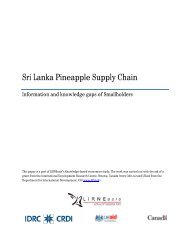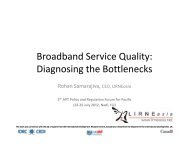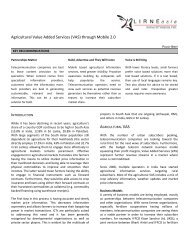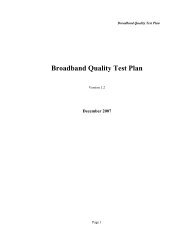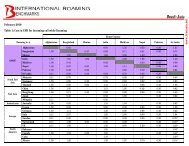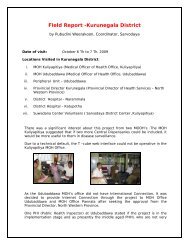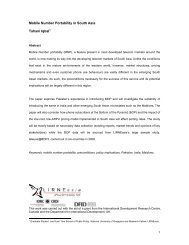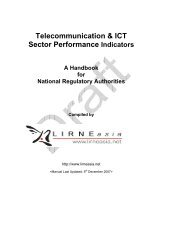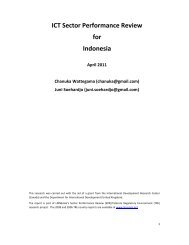Teleuse@BOP3: A Qualitative Study - LIRNEasia
Teleuse@BOP3: A Qualitative Study - LIRNEasia
Teleuse@BOP3: A Qualitative Study - LIRNEasia
You also want an ePaper? Increase the reach of your titles
YUMPU automatically turns print PDFs into web optimized ePapers that Google loves.
The uniqueness and importance of Teleuse@BOP 3<br />
Teleuse@BOP 3 is characterized by providing insights into the usage of ‘more than voice’ or ‘Mobile 2.0’ services on<br />
mobile phones. By looking at the usage of such services like money transfer, social networking or text-voting, this<br />
study intends to bring clarity to the issue of BOP respondents having their first internet experience through mobile<br />
phones. The issue of trust and reliability amongst the BOP respondents while using mobile payment or other such<br />
services involving financial transactions is also of special interest to the study. Another added module for this study is<br />
the focus on the teleuse experience of BOP migrant workers with a special emphasis on coordinating remittances.<br />
The quantitative component of the current study was carried out in India, Pakistan, Philippines, Bangladesh and Sri<br />
Lanka in 2008. Unlike the previous study in 2006 (Teleuse@BOP 2), the qualitative component for Teleuse@BOP 3<br />
was initiated only after the quantitative findings were in place to streamline the scope of the qualitative aspect. The<br />
qualitative research has been carried out by CKS Consulting Pvt. Ltd., India on behalf of <strong>LIRNEasia</strong> in early 2009 in<br />
the same countries.<br />
The qualitative research was planned to gain deeper socio-cultural and behavioral insights into the quantitative<br />
findings by looking to understand the reasons behind various statistically verified statements made for each of the<br />
countries. The qualitative component is designed to complement the quantitative part by providing ‘stories’ that can<br />
explain the occurrence of each of the phenomena brought about by the statistical analysis for each of these<br />
countries.<br />
Objectives of the <strong>Study</strong><br />
End goals and audience of this report<br />
The main objective of this research is to provide more contexts to the findings from the quantitative phase of the<br />
research. It attempts to provide socio-cultural, behavioral or any other cognitive insights into conclusions drawn from<br />
the statistical analysis of the quantitative data generated in the preceding phase of the research. Hence, it attempts<br />
to answer questions like ‘why’ and ‘how’ that may come to a reader’s mind after going through the preliminary<br />
findings. This report is thus a supplement to the Teleuse@BOP 3 study carried out by <strong>LIRNEasia</strong> and has to be read<br />
closely with the quantitative findings to be able to understand the context of these conclusions. This report will enrich<br />
the knowledge of various stakeholders such as policy makers and large corporate organizations around certain<br />
observed phenomena and will help them take up their individual goals in a much more effective and informed<br />
manner.<br />
9




